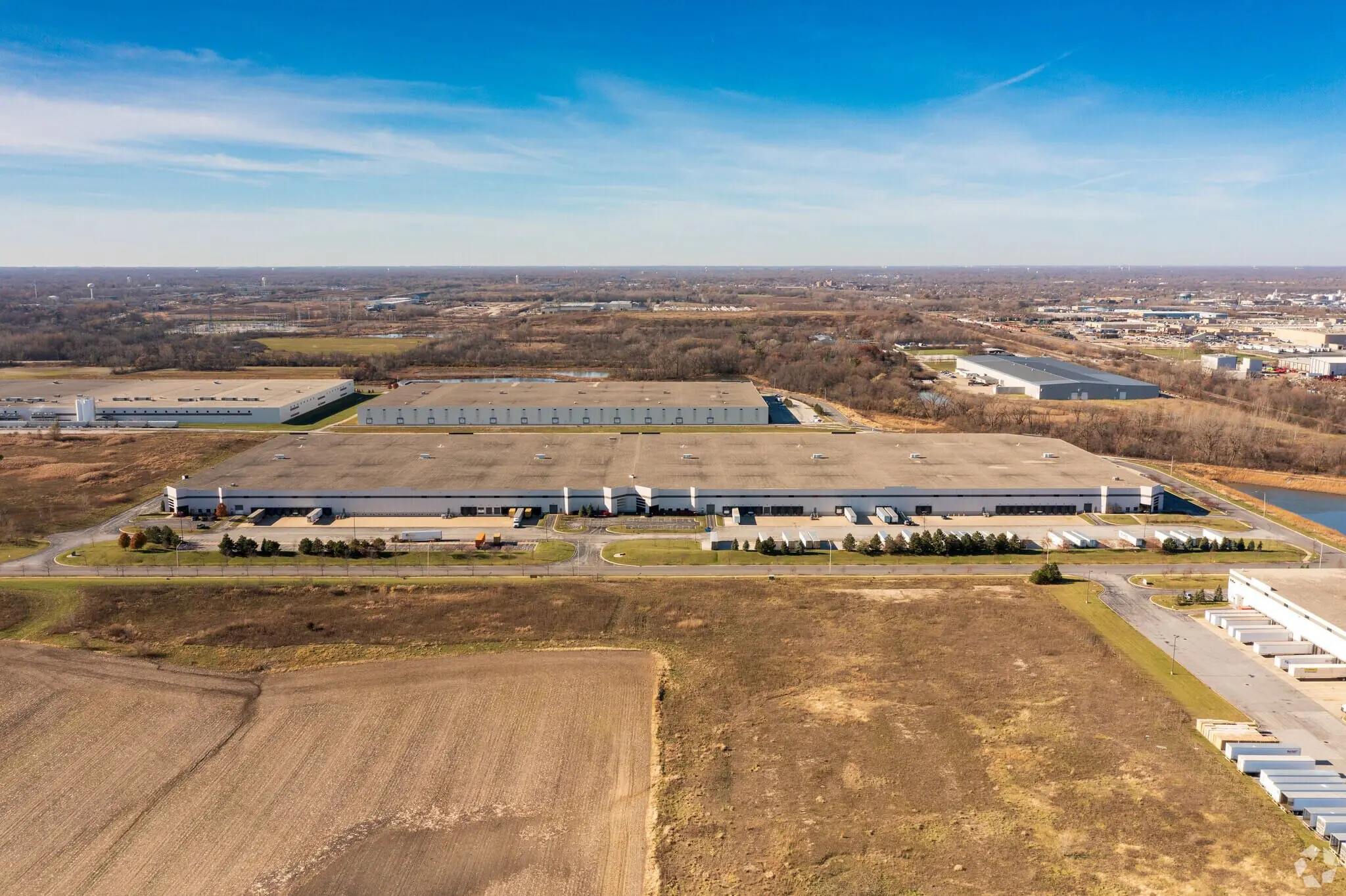Midwest Warehousing Trends for 2025
The Midwest region of the country occupies a strategic position in the supply chain and logistics landscape, and for good reason. America’s Heartland has a thriving manufacturing sector that relies heavily on efficient logistics solutions and the region’s rich agricultural heritage creates a high demand for specialized storage and transportation services. The midwest’s central location, along with the fact that many of its largest cities were founded with direct access to major waterways like the Great Lakes and the Mississippi River, make it ideal for efficient logistics.
The region’s extensive transportation networks and robust infrastructure make it an essential hub for warehousing and fulfillment operations both globally and nationwide. And with the federal government’s recent nationwide infrastructure investment of $550 billion already beginning to flow through the region, its significance to the logistics industry in the United States is set to continue for years to come.
Major Trends in Midwest Warehousing
E-Commerce Growth in the Midwest
The Midwest is experiencing a significant rise in e-commerce, driving increased demand for fulfillment services across the region. As online shopping continues to grow, the need for fast, reliable shipping solutions to densely populated areas becomes more critical.
While the need for increased warehouse space to accommodate higher volumes of online orders spans the nation, the Midwest enjoys a significant pricing advantage. The price of warehouse space per square foot in the Midwest is nearly half that in the Northeast and West Coast regions, leading to an e-commerce-fueled rise in demand for space in Midwest warehouses.

Technological Innovations
As the pace of technological advancement accelerates, so does innovation throughout the logistics and warehousing sectors. The integration of advanced technologies such as Artificial Intelligence (AI) and the Internet of Things (IoT) is revolutionizing warehouse management across the country, and the Midwest is no exception. These innovations enable smarter operations, improving efficiency and accuracy throughout the warehouse.
Automation plays a crucial role in streamlining processes, reducing manual errors, and enhancing productivity. Real-time tracking systems are being implemented to provide greater supply chain visibility and efficiency. Midwest warehouses are increasingly adopting these technologies to stay competitive and meet the evolving demands of the logistics industry.
Sustainability Initiatives in Midwest Logistics
Sustainability is becoming a key focus in the logistics sector nationwide and this focus is increasingly affecting Midwest 3PL operations as well. Companies are implementing green logistics practices throughout their warehousing operations to minimize their environmental footprint, which accounts for of logistics & transportation.
This includes adopting energy-efficient technologies (such as LED lighting and renewable energy sources) in warehouses and fulfillment centers in the Midwest. Additional sustainability measures can include integrating sustainable packaging and eco-friendly transportation methods to reduce carbon emissions. By prioritizing sustainability, companies can meet regulatory requirements, appeal to environmentally conscious consumers, and contribute to the preservation of the environment.
Infrastructure Development
The Midwest is seeing significant infrastructure development to support the growing trade and economic activities in the region. The recent passage of the Infrastructure Investment and Jobs Act has provided significant federal funding for infrastructure projects across the U.S., including the Midwest. Many of these projects are focused on improving intermodal transportation.
In Ohio, an expansion to Interstate 70 improves this east-west corridor, improving freight flow and reducing congestion. The Port of Toledo has undergone significant upgrades to handle larger vessels to increase cargo capacity, making it a more efficient gateway for international trade.
Rebuild Illinois, a massive infrastructure improvement program, will rebuild older bridges, repair roads, and make further modernizations of the state’s transportation network. Chicago’s O’Hare International Airport is also undergoing a major expansion to improve its capacity and efficiency, making it a more attractive hub for air cargo.
In Wisconsin, improvements to the Port of Milwaukee will allow it to handle larger ships and increase cargo throughput. The state has also been improving its rail infrastructure, upgrading tracks and improving connectivity to major transportation hubs.
Additionally, warehousing facilities are expanding in key locations such as Chicago, Columbus, St. Louis, and Milwaukee. These developments enhance the region’s capacity to handle increased goods volume and improve the efficiency of supply chain operations throughout the Midwest. The strategic positioning of these facilities enables businesses to optimize their logistics processes and ensure timely delivery to various markets nationwide.
Supply Chain Resilience in the Midwest Region
The COVID-19 pandemic drove home the importance of building resilient supply chains nationwide. Now when portions of the country are disrupted by unpredictable events (like hurricanes in the southeastern and northeastern U.S., wildfires and mudslides in the west, and power grid failures in Texas and the South) it pays to have a central Midwest hub that can stabilize operations.
Businesses are now focusing on diversifying their supplier bases to mitigate risks associated with disruptions. Emphasizing local and regional sourcing is crucial to ensure both stability and continuity in supply chain operations. By developing robust contingency plans and investing in technology to monitor supply chain risks, companies can enhance their resilience and adaptability, mitigating the risk of future disruptions.
Workforce Management in Midwest Warehouses
According to the U.S. Bureau of Labor Statistics, the transportation and warehousing sector has added more jobs than any other sector since the pandemic. This is especially true in the Midwest, where warehouse and transportation labor has grown by more than 36% in the last decade. With the demand for skilled warehousing labor growing rapidly, companies are investing heavily in training and development programs to attract and retain skilled warehouse staff. Implementing technologies to boost workforce productivity and efficiency is also essential.
By offering competitive wages, flexible work schedules, and career development opportunities, businesses can build a capable and motivated workforce. This focus on workforce management ensures smooth operations and maintains high service standards, representing an investment in the future of the Midwest warehousing industry as a whole.

Midwest Warehousing: Leveraging Trends for Superior Supply Chain Solutions with WSI
The trends shaping fulfillment and warehousing in the Midwest in 2025 present numerous opportunities for businesses to optimize their logistics operations. WSI is at the forefront of leveraging these developments to provide top-notch logistics solutions. By embracing technology, expanding infrastructure, prioritizing sustainability, and focusing on resilience and workforce development, WSI ensures that its clients continue to receive the efficient and reliable supply chain services that have long been a WSI trademark.
To stay ahead in the dynamic landscape of Midwest supply chains, partner with WSI for customized supply chain solutions tailored to your specific needs. If you’d like help navigating the evolving trends in Midwest warehousing and fulfillment, contact us to speak with an expert today.
About the Author

Mikayla Josefchuk
Mikayla Josefchuk is WSI’s Inside Sales and Marketing Representative, providing customers with insights on tailored supply chain solutions including warehousing, transportation, and eCommerce fulfillment. A business school graduate of the University of Missouri – Columbia, Mikayla focuses on business development and content creation. When she’s not at work, Mikayla spends her time on walks with her dog, Boone.



